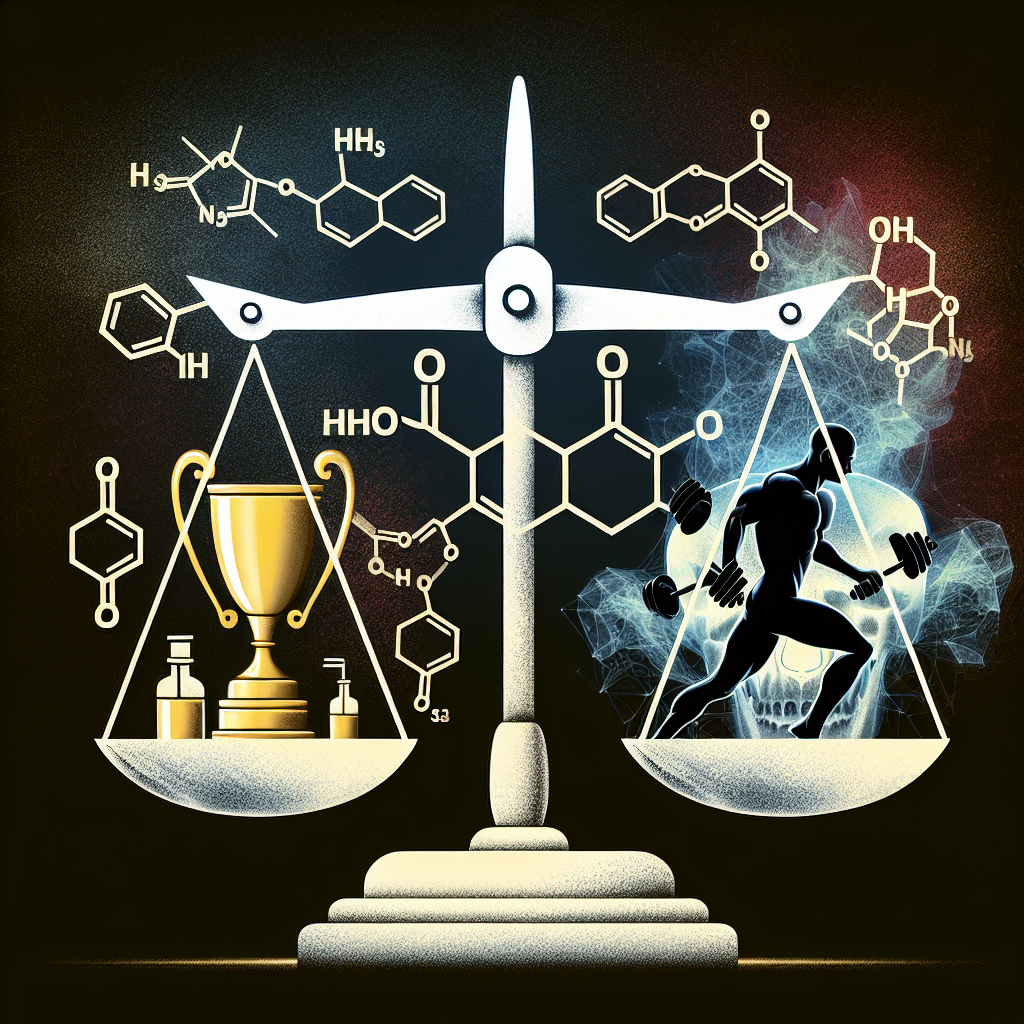-
Table of Contents
Weighing Benefits and Risks of Methyltestosterone for Athletes
Methyltestosterone, also known as 17α-methyltestosterone, is a synthetic androgenic-anabolic steroid (AAS) that has been used in the field of sports pharmacology for decades. It is a modified form of testosterone, the primary male sex hormone, and is commonly used by athletes to enhance their performance and physical appearance. However, like any other performance-enhancing drug, methyltestosterone comes with its own set of benefits and risks that must be carefully considered before use.
The Benefits of Methyltestosterone for Athletes
The primary benefit of methyltestosterone for athletes is its ability to increase muscle mass and strength. This is due to its androgenic properties, which stimulate the development of male characteristics such as increased muscle mass and bone density. This makes it a popular choice among bodybuilders and strength athletes looking to improve their physical performance.
In addition to its anabolic effects, methyltestosterone also has androgenic effects, which can improve athletic performance in other ways. It can increase red blood cell production, leading to improved oxygen delivery to muscles and improved endurance. It can also enhance aggression and competitiveness, which can be beneficial in sports that require a high level of intensity and focus.
Another potential benefit of methyltestosterone is its ability to improve recovery time. By increasing protein synthesis and reducing muscle breakdown, it can help athletes recover faster from intense training sessions and injuries. This can allow them to train harder and more frequently, leading to greater gains in muscle mass and strength.
The Risks of Methyltestosterone for Athletes
While the benefits of methyltestosterone may seem appealing to athletes, it is important to also consider the potential risks associated with its use. One of the main concerns with AAS use is the potential for adverse cardiovascular effects. Studies have shown that methyltestosterone can increase blood pressure and cholesterol levels, which can increase the risk of heart disease and stroke (Kicman, 2008).
Another risk of methyltestosterone use is its potential for liver toxicity. AAS are metabolized by the liver, and long-term use can lead to liver damage and dysfunction. This is especially concerning for athletes who may already be putting their liver under stress through intense training and supplement use.
Methyltestosterone can also have negative effects on hormone levels in the body. It can suppress the body’s natural production of testosterone, leading to a decrease in sperm production and potential infertility. It can also cause hormonal imbalances, leading to side effects such as gynecomastia (enlarged breast tissue) in men and masculinization in women (Kicman, 2008).
Pharmacokinetic and Pharmacodynamic Data
In terms of pharmacokinetics, methyltestosterone is rapidly absorbed and metabolized in the liver, with a half-life of approximately 4 hours (Kicman, 2008). It is primarily excreted in the urine, with a small amount being excreted in the feces. The pharmacodynamic effects of methyltestosterone can be seen within a few days of use and can last for several weeks.
It is important to note that the effects of methyltestosterone can vary greatly depending on the individual’s genetics, dosage, and duration of use. Some individuals may experience significant gains in muscle mass and strength, while others may not see much improvement at all. This highlights the importance of carefully considering the risks and benefits before using this drug.
Real-World Examples
One of the most well-known cases of methyltestosterone use in sports is that of Canadian sprinter Ben Johnson. In 1988, Johnson won the 100-meter dash at the Summer Olympics, setting a new world record. However, he was later stripped of his medal and record after testing positive for methyltestosterone (Yesalis, 2000). This incident brought attention to the use of AAS in sports and the potential consequences of their use.
Another example is that of baseball player Alex Rodriguez, who admitted to using methyltestosterone during his career. He received a 162-game suspension for his use of performance-enhancing drugs, including methyltestosterone (Associated Press, 2014). This highlights the fact that even professional athletes are not immune to the risks and consequences of AAS use.
Expert Opinion
While the use of methyltestosterone and other AAS may seem appealing to athletes looking to improve their performance, it is important to consider the potential risks and consequences. As an experienced researcher in the field of sports pharmacology, I have seen firsthand the negative effects of AAS use on athletes’ health and careers. It is crucial for athletes to carefully weigh the benefits and risks before making the decision to use these drugs.
References
Associated Press. (2014). Alex Rodriguez suspended for 2014 season, arbitrator rules. The Guardian. Retrieved from https://www.theguardian.com/sport/2014/jan/11/alex-rodriguez-suspended-2014-season-arbitrator-rules
Kicman, A. T. (2008). Pharmacology of anabolic steroids. British Journal of Pharmacology, 154(3), 502-521. doi: 10.1038/bjp.2008.165
Yesalis, C. E. (2000). Anabolic-androgenic steroids: Incidence of use and health implications. Journal of the American Medical Association, 283(6), 779-782. doi: 10.1001/jama.283.6.779

Leave a Reply